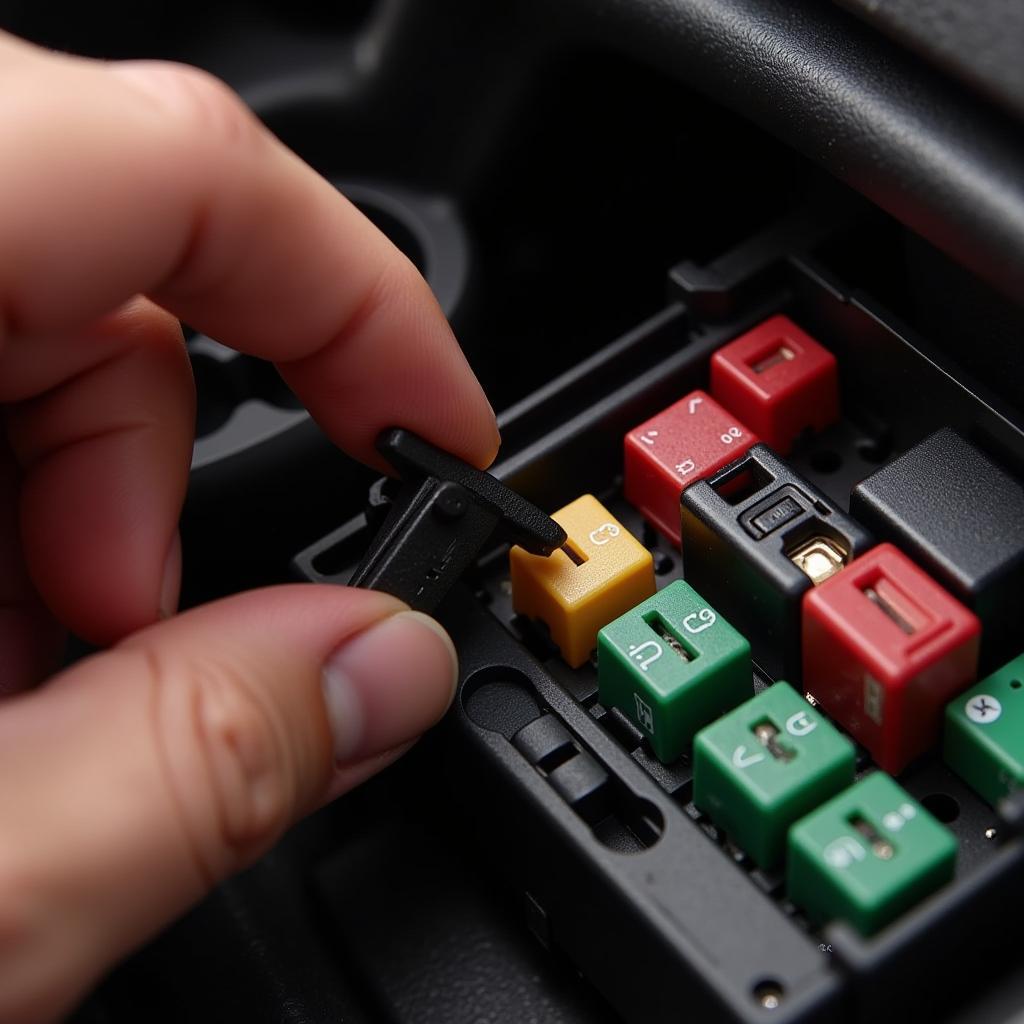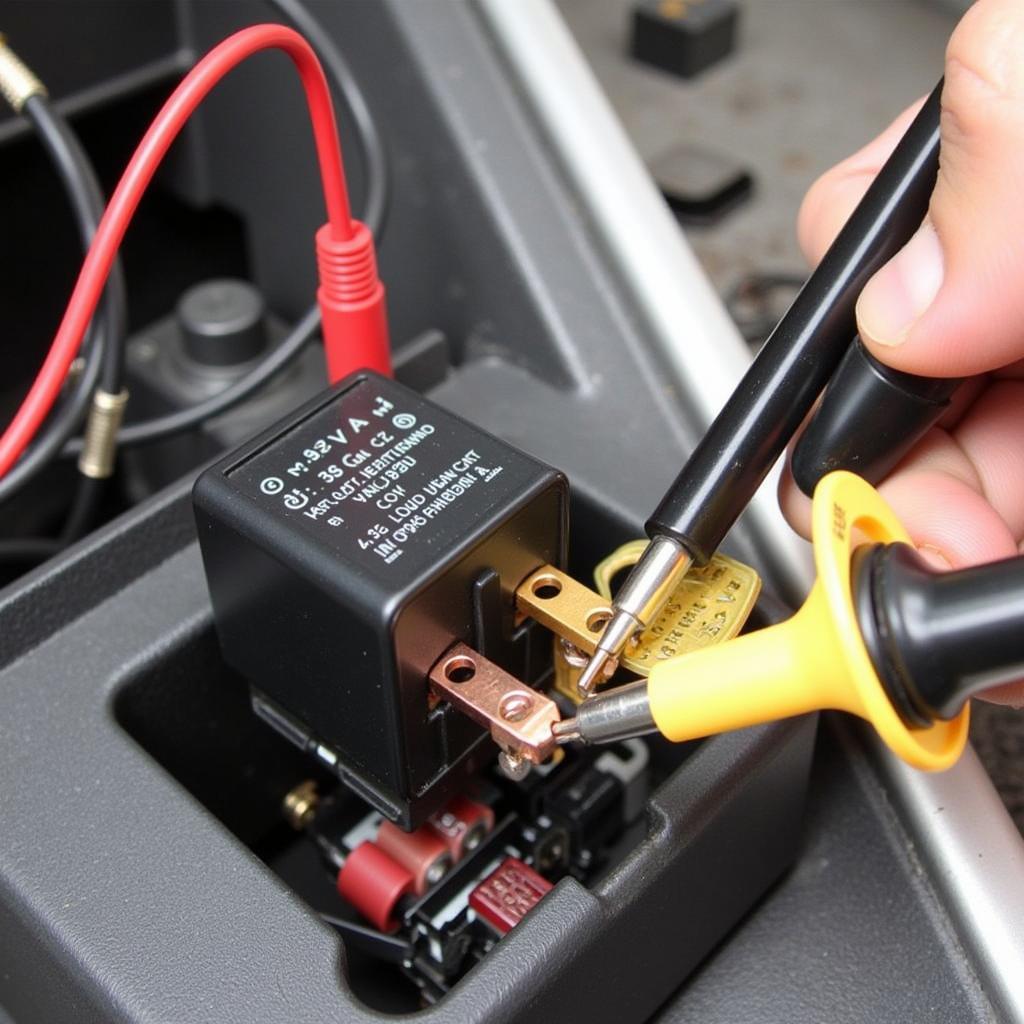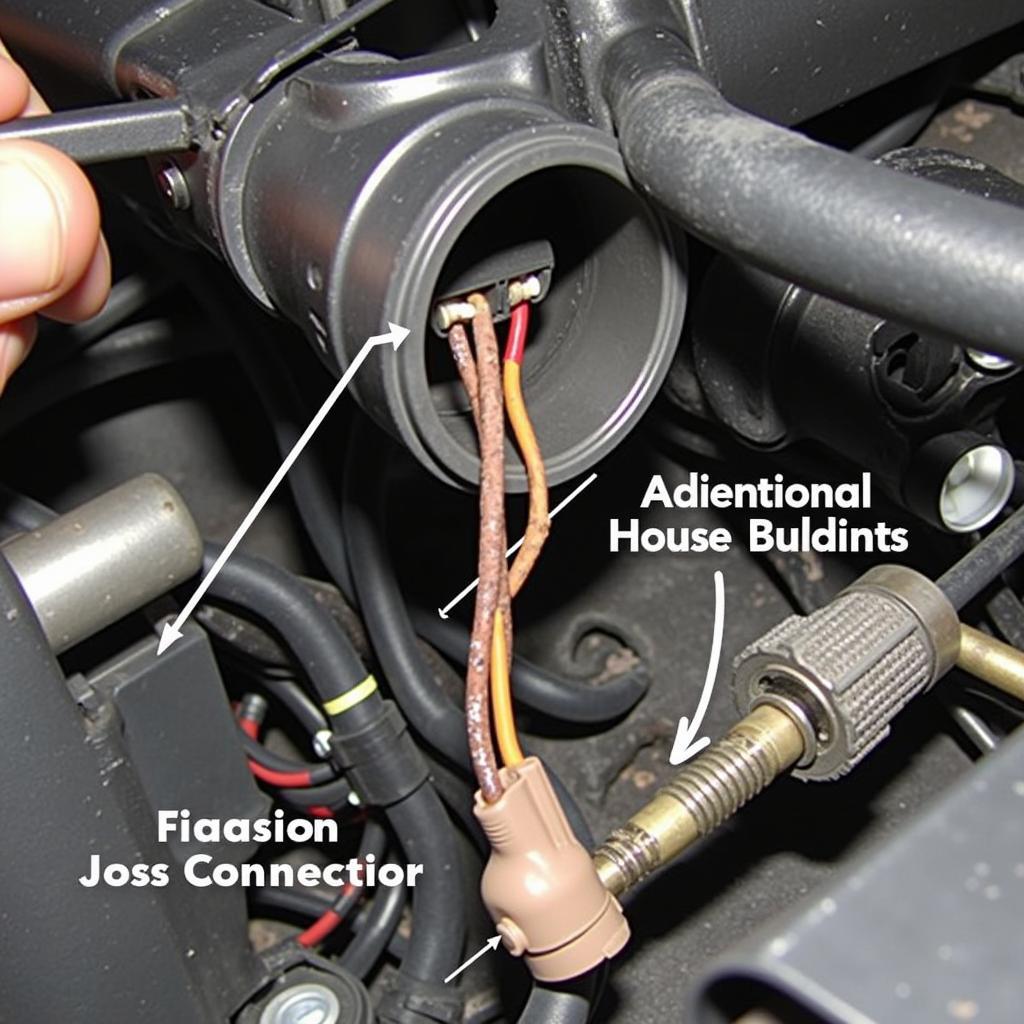A malfunctioning car horn can be a safety hazard. Knowing how to repair it can save you time and money. This guide will provide a comprehensive walkthrough on how to diagnose and fix common car horn issues.
Understanding Your Car Horn System
Before diving into repairs, it’s crucial to understand how your car horn works. The system comprises the horn itself, a relay, a fuse, wiring, and the horn switch, typically located on your steering wheel. A problem with any of these components can cause the horn to fail.
Is your horn completely silent, making a weak sound, or only working intermittently? Identifying the specific symptom is the first step in diagnosing the problem. For instance, a completely silent horn might indicate a blown fuse or a faulty relay, while a weak sound could point towards a failing horn itself.
After you notice how the horn is malfunctioning or not working, the first check should be the fuse box. Locate the horn fuse (consult your owner’s manual) and check if it’s blown. If it is, replace it with a fuse of the same amperage.
Let’s explore each component and how to troubleshoot them. We’ll cover everything from simple checks to more advanced repairs. Are you ready to get your hands a little dirty? Let’s get started!
 Checking the Car Horn Fuse
Checking the Car Horn Fuse
Diagnosing the Problem: Where to Start When Your Car Horn Isn’t Working
Once you’ve checked the fuse, the next step is to inspect the relay. The relay is a small electrical switch that controls the power to the horn. You can usually find it in the fuse box alongside the fuses. Swap the horn relay with another relay of the same type to see if that solves the problem.
If the fuse and relay are both good, the next suspect is the horn switch. You can test this by using a multimeter or a test light to check for continuity when the horn button is pressed. No continuity usually indicates a faulty switch. Replacing the steering wheel switch can be a slightly more complex process than changing a fuse. You might have to remove the steering wheel cover, or in some cars, even the steering wheel itself to access the switch.
 Testing the Car Horn Relay with a Multimeter
Testing the Car Horn Relay with a Multimeter
If the switch checks out, then the problem likely lies with the horn itself. You can test the horn directly by applying 12V power to it using jumper wires connected to your car’s battery. If the horn doesn’t sound, it’s definitely faulty and needs replacing. Remember to disconnect the negative terminal of the battery before working on any electrical components.
Replacing the Horn: A Step-by-Step Guide
Replacing the car horn is usually a straightforward process. Locate the horn, typically mounted behind the front grille. Disconnect the electrical connector and remove the mounting bolts. Then, install the new horn, connect the electrical connector, and secure it with the mounting bolts.
Remember to consult your car’s repair manual for specific instructions as the location and mounting of the horn can vary depending on the make and model. Don’t hesitate to consult a professional if you’re unsure about any step.
Troubleshooting Tricky Horn Problems
Sometimes, the problem might be more subtle. For example, the horn might work intermittently, or only work when the steering wheel is turned in a certain position. This could indicate a wiring issue, such as a loose connection or a damaged wire. Carefully inspect the wiring harness leading to the horn for any signs of damage, fraying, or loose connections.
 Inspecting Car Horn Wiring Harness
Inspecting Car Horn Wiring Harness
Repairing stunt RC cars or fixing reverse car horns can have similar diagnostic processes as repairing a regular car horn. You might find valuable information in our guides on how to repair stunt RC car and how to repair reverse car horn.
Conclusion
Repairing a car horn is often a simple DIY project. By understanding the components involved and following the diagnostic steps outlined in this guide, you can often fix the problem yourself and save on repair costs. However, if you’re uncomfortable working with electrical systems, or if the problem persists despite your efforts, it’s always best to consult a qualified mechanic. Knowing How To Repair Car Horn issues empowers you to address a crucial safety feature in your vehicle.
FAQ
- What is the most common reason for a car horn not working? A blown fuse is the most frequent culprit.
- How much does it cost to replace a car horn? The cost varies but typically ranges from $20 to $100, including parts and labor.
- Where is the car horn relay usually located? It’s generally found in the fuse box under the hood or dashboard.
- Can I test the car horn myself? Yes, you can test it directly by applying 12V power to it using jumper cables.
- What tools do I need to replace a car horn? Basic tools like a wrench, screwdriver, and possibly a multimeter are typically required.
- Is it dangerous to drive with a broken car horn? Yes, it can be a safety hazard as you can’t alert other drivers in emergencies.
- How often should I check my car horn? It’s a good idea to test your horn every few months to ensure it’s working correctly.
Common Situations
- Horn sounds weak: This could indicate a failing horn, low voltage, or a poor connection.
- Horn only works intermittently: This often points towards a wiring problem, loose connection, or a faulty relay or switch.
- Horn makes no sound at all: A blown fuse, faulty relay, or a broken horn are the most likely causes.
Further Exploration
For further assistance, check out our other articles:
- How to diagnose electrical problems in your car
- Maintaining your car’s safety features
Need help? Contact us via WhatsApp: +1(641)206-8880, Email: [email protected]. We have a 24/7 customer support team.

Leave a Reply